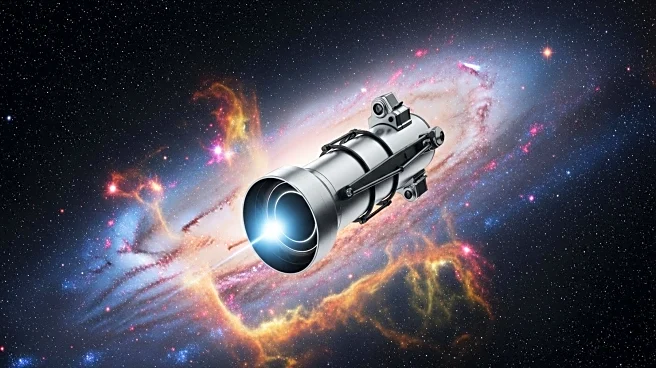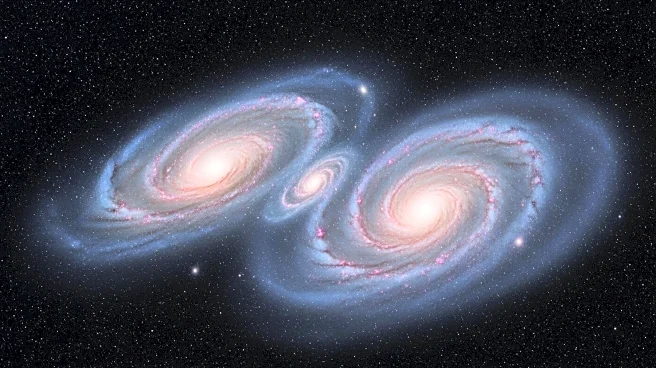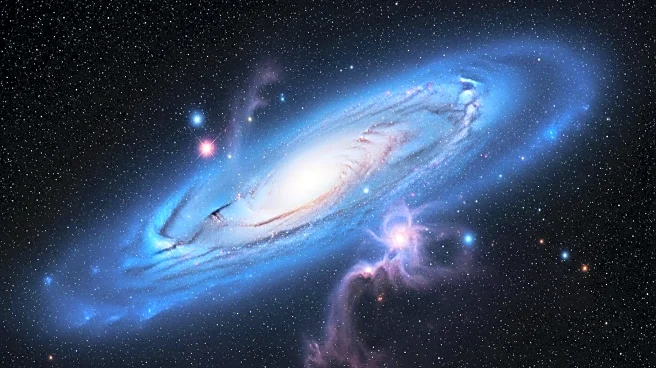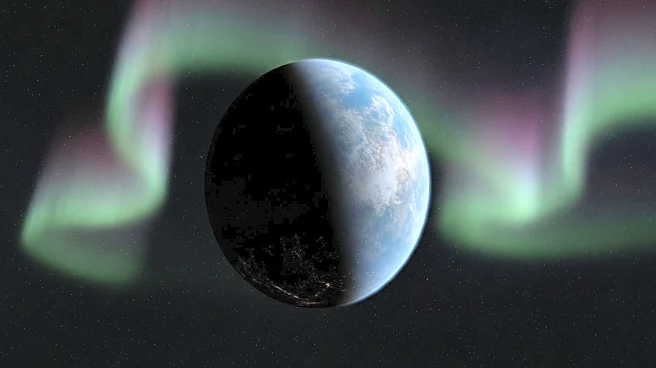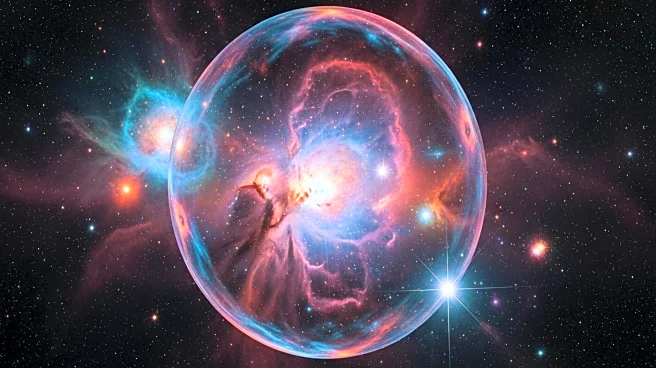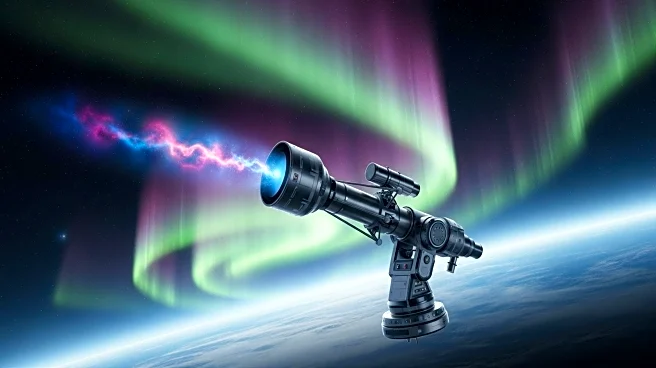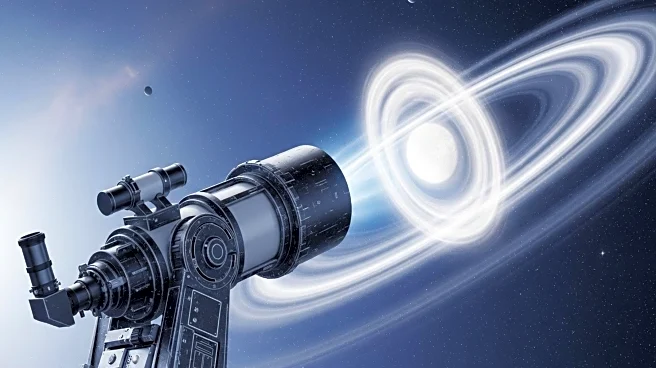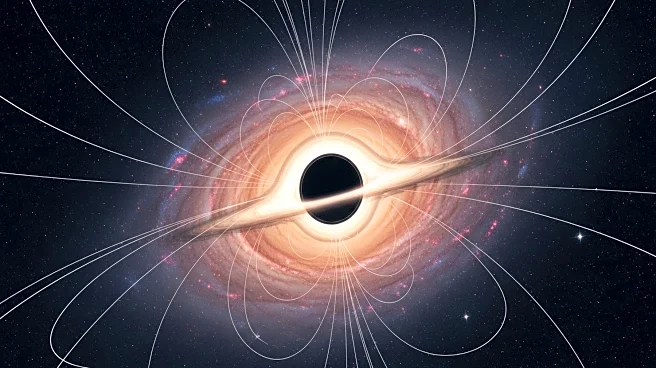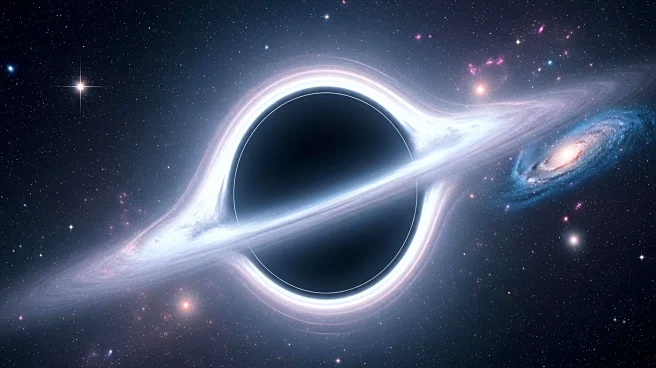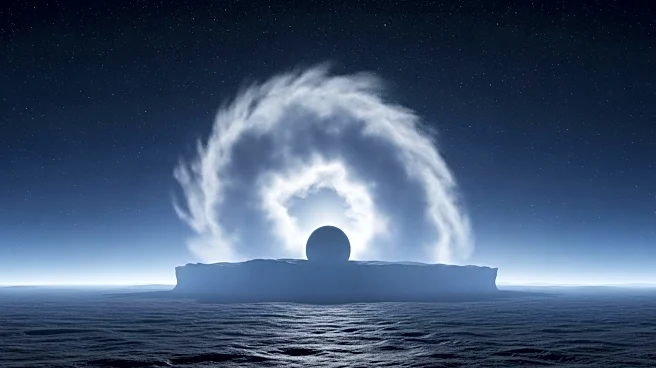What is the story about?
What's Happening?
The James Webb Space Telescope has provided an unprecedented view of the jet emanating from the black hole at the center of galaxy M87, located over 50 million light-years away. This jet, first observed in 1918, is a stream of superheated plasma and has been extensively studied. However, many of its features, such as bright and helix-shaped regions, remain unexplained. The new observations reveal these features in greater detail and also capture the less visible counter-jet. The data was obtained by reanalyzing observations initially focused on M87's stars, allowing astronomers to remove overwhelming starlight and better visualize the jet.
Why It's Important?
This discovery is significant as it enhances the understanding of black hole jets, which are crucial for studying the dynamics of galaxies. The detailed observations could help scientists model the gas structures surrounding M87, providing insights into the interactions between black holes and their environments. This research could also contribute to broader astrophysical theories about the behavior of matter under extreme conditions, potentially impacting future studies of black holes and galaxy formation.
What's Next?
Astronomers will likely continue to analyze the data from the James Webb Space Telescope to further understand the mechanisms behind the jet's features. Future observations may focus on the interactions between the jet and surrounding materials, which could reveal more about the processes occurring near supermassive black holes. This ongoing research may also inspire new theoretical models and simulations to explain the observed phenomena.
AI Generated Content
Do you find this article useful?
